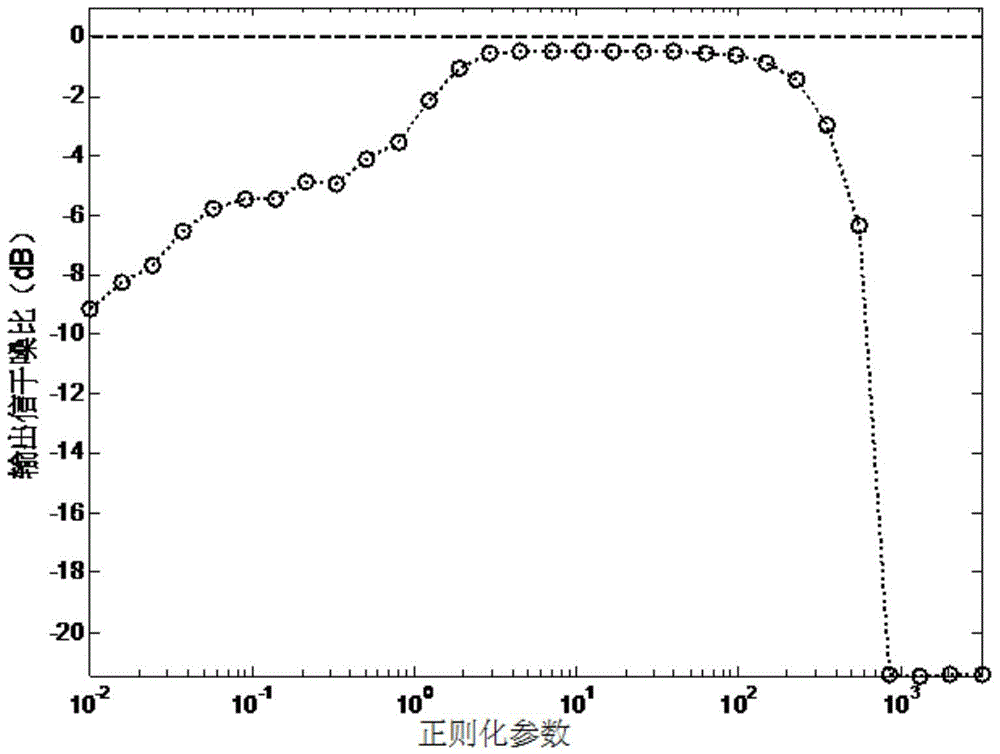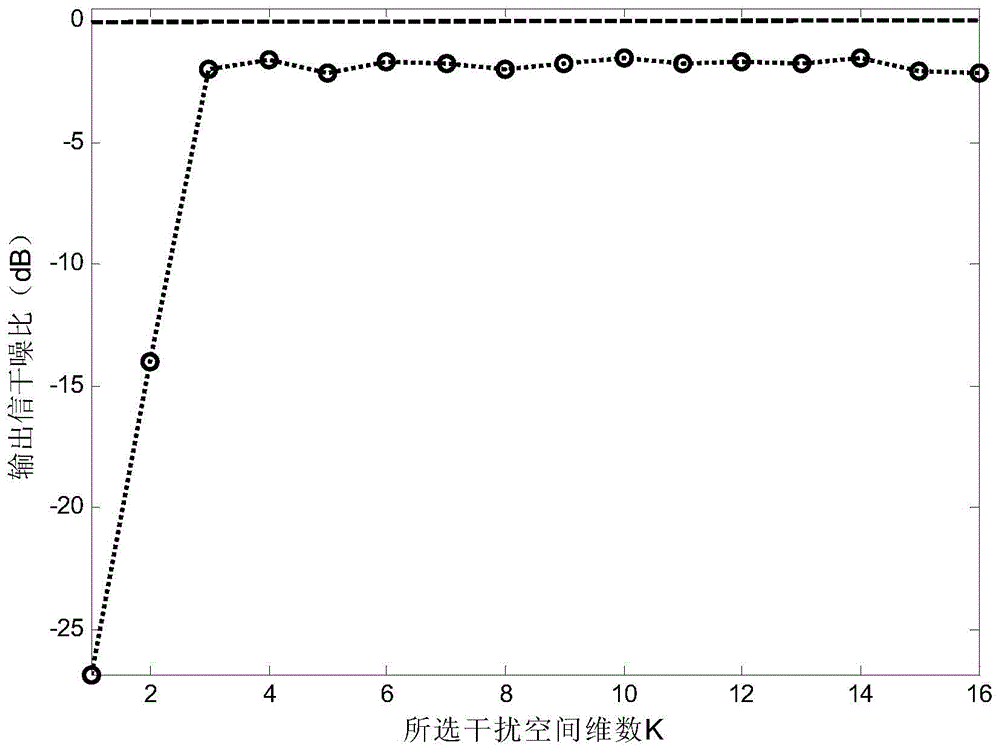Adaptive beam forming method based on 1 norm constraint
An adaptive beam and norm technology, applied in the direction of radio wave measurement systems, instruments, etc., can solve problems such as array manifold mismatch, affecting beam performance, steering vector mismatch, etc., and achieve good robustness
- Summary
- Abstract
- Description
- Claims
- Application Information
AI Technical Summary
Problems solved by technology
Method used
Image
Examples
Embodiment Construction
[0024] The present invention will be further explained below in conjunction with the drawings:
[0025] Reference figure 1 , Is a flowchart of the adaptive beamforming method based on 1-norm constraint of the present invention. The adaptive beamforming method based on 1-norm constraint includes the following steps:
[0026] Step 1. Use the radar receiving array to receive signals. The signals received by the radar receiving array include interference signals and target echo signals; the radar receiving array is a uniform linear array, and the number of elements of the radar receiving array is N. The radar receiving The array element spacing is d, and the number of samples of the signal received by the radar receiving array is L.
[0027] The specific sub-steps are:
[0028] The far-field narrowband signal received by the radar receiving array is used, and the far-field narrowband signal received by the radar receiving array includes interference signals and target echo signals. In ...
PUM
 Login to View More
Login to View More Abstract
Description
Claims
Application Information
 Login to View More
Login to View More - R&D
- Intellectual Property
- Life Sciences
- Materials
- Tech Scout
- Unparalleled Data Quality
- Higher Quality Content
- 60% Fewer Hallucinations
Browse by: Latest US Patents, China's latest patents, Technical Efficacy Thesaurus, Application Domain, Technology Topic, Popular Technical Reports.
© 2025 PatSnap. All rights reserved.Legal|Privacy policy|Modern Slavery Act Transparency Statement|Sitemap|About US| Contact US: help@patsnap.com



